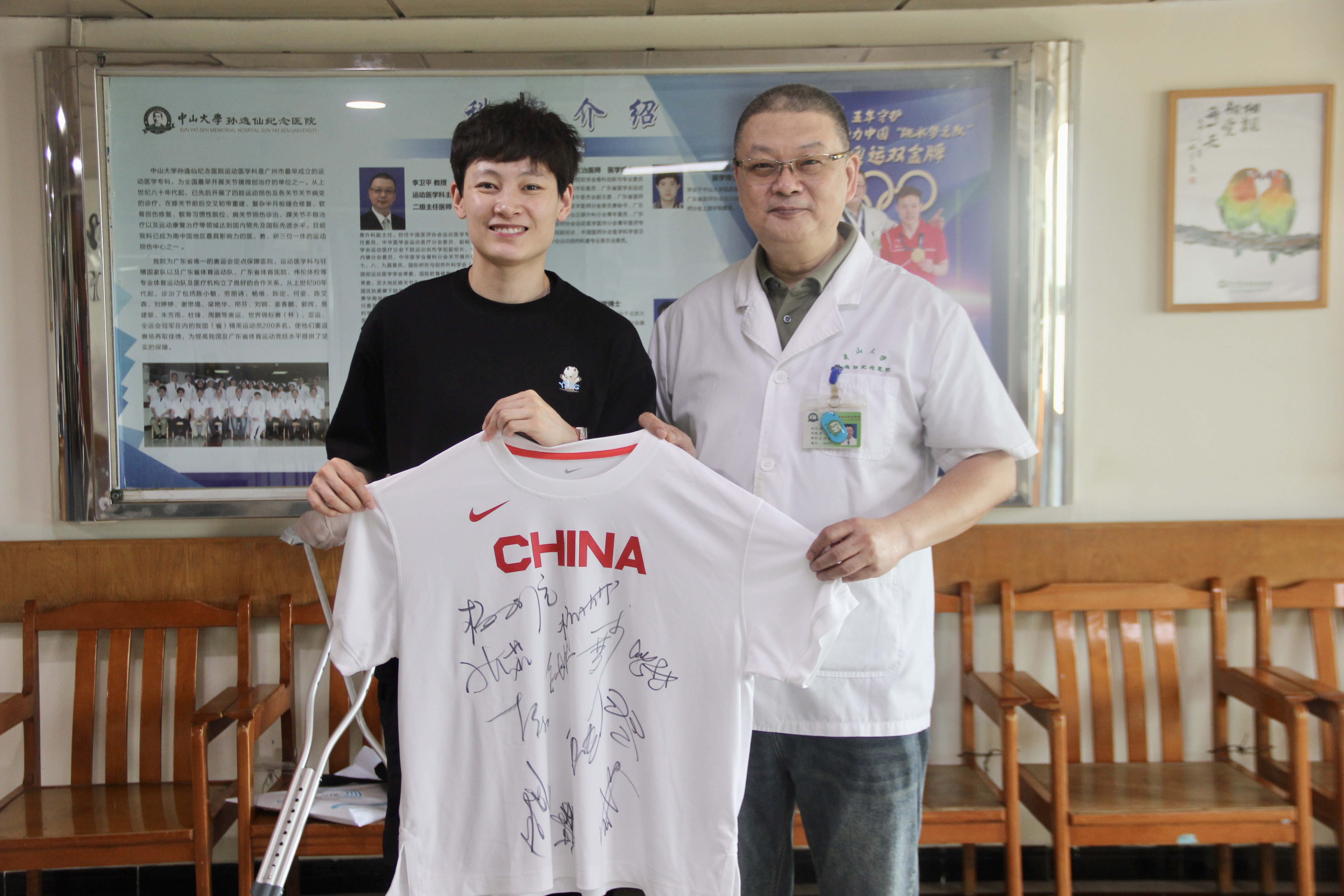The Chinese Woman Basketball Team has recently overcome Japan after 12 years and won the 12th International Basketball Federation (FIBA) Women’s Asia Cup in Sydney.
Upon their arrival in Guangzhou, Yang Liwei, Captain of the China women’s basketball team, went to the Sun Yat-sen Memorial Hospital and presented Professor Li Weiping, Director of the Department of Sports Medicine, with a special gift - a uniform signed by the coach and all team members to express her gratitude.

(Photo provided to GDToday)
In the final moments of the semifinal between China and Australia on July 1, Yang Liwei had to quit the competition due to a serious knee injury. Yang immediately contacted Professor Li for help.
After careful online inquiry, Professor Li had a preliminary judgement. After Yang arrived in Guangzhou, he conducted a detailed examination for Yang and judged that she needed conservative management supplemented by rehabilitation.
“Professor Li’s diagnosis fully considers our own situation and the potential health risks we need to face in future events, which is also a key factor for us to trust him,” Yang said.
Professor Li instructed Yang on how to carry out regular rehabilitation. “Non-surgical, non-invasive conservative treatments such as functional training and medications can help athletes return to their best exercise and hopefully return to competition as soon as possible,” he said.
Things we need to know about sports injuries
Whether you are an athlete or not, when there is a trauma (sprain or bump, etc.) during exercise, it is necessary to pay attention to early treatment. According to Professor Li, sports trauma can be specifically divided into two categories:
The first type is a serious injury. If symptoms such as severe joint pain, deformity and limited movement immediately appear, it is necessary to immediately contact the hospital for emergency care and carry out simple fixation.
The second type is joint sprain, joint swelling and pain, and inability to move, which may be soft tissue injuries, such as injuries of joint ligaments, meniscus and tendons. The “RICE” treatment method should be followed in the early stage.
1.Rest. Stop doing sports immediately to prevent repeated and aggravate injuries.
2.Ice. Use ice to reduce swelling.
3.Compression. Control the movement of the injured parts and avoid movement that may cause repeated injuries.
4.Elevation. Raise the injured parts, which can help with blood flow and reduce leakage.
In the second kind of case, it’s necessary to go to a doctor of sports medicine for examination in the later stage. If the injury is not serious, conservative treatment can be taken. A certain degree of joint immobilization or wearing a standard protective gear is required, and then rehabilitation can be carried out gradually under the guidance of the doctor. If the injury is severe, surgery may be required.
Author | Hannah, Eliana Chen (Intern)
Editor | Olivia, Abby, James
















